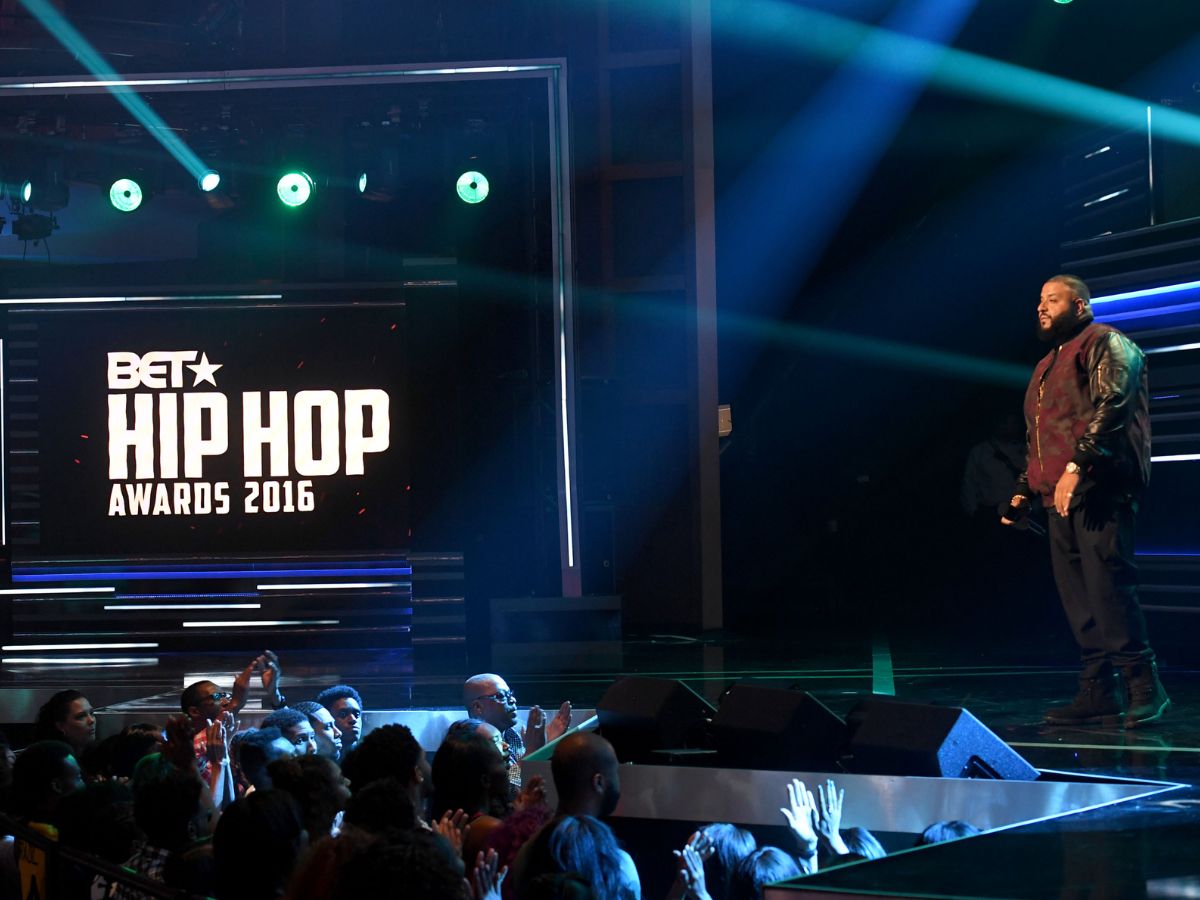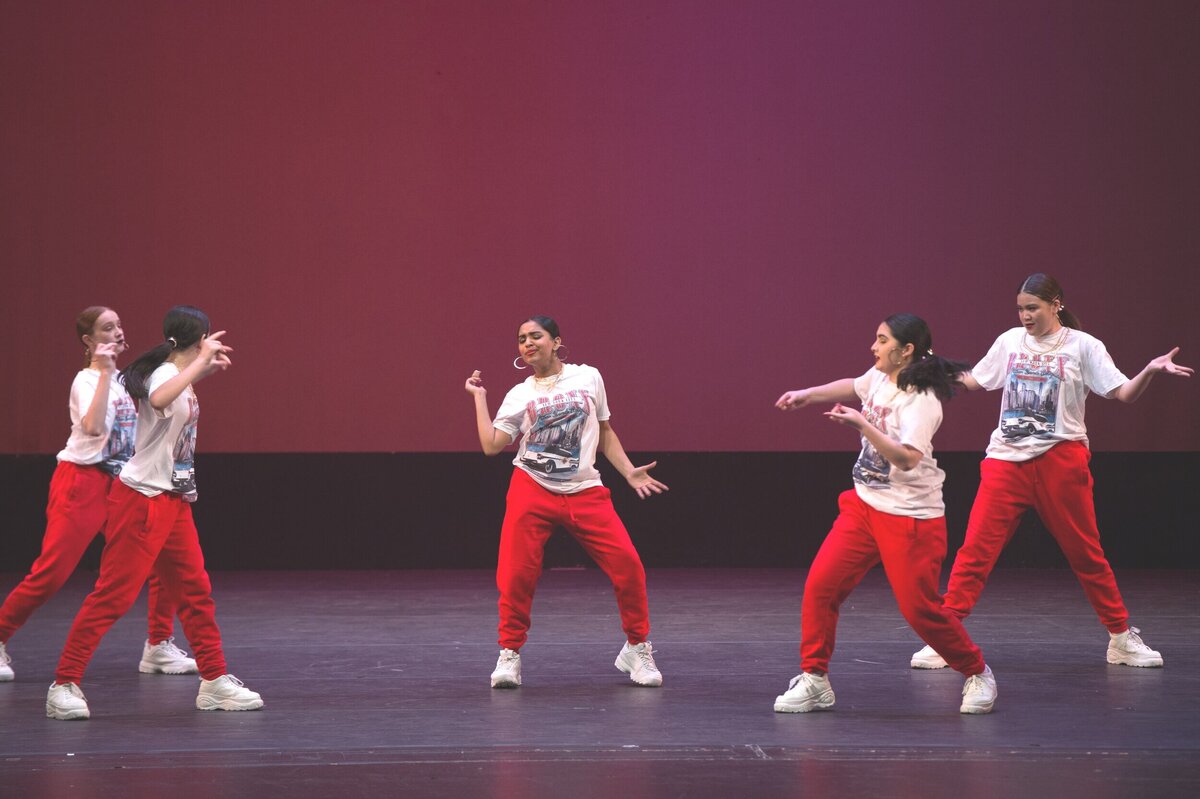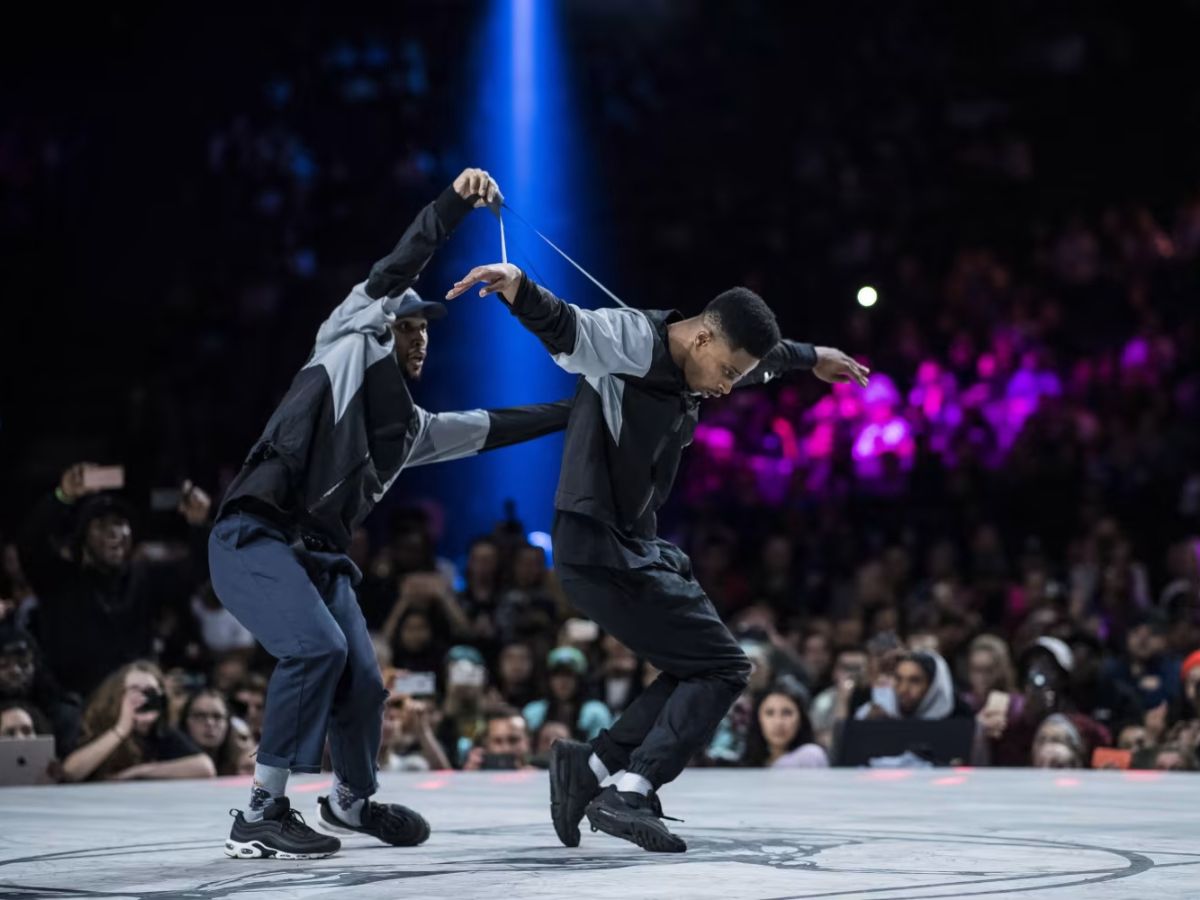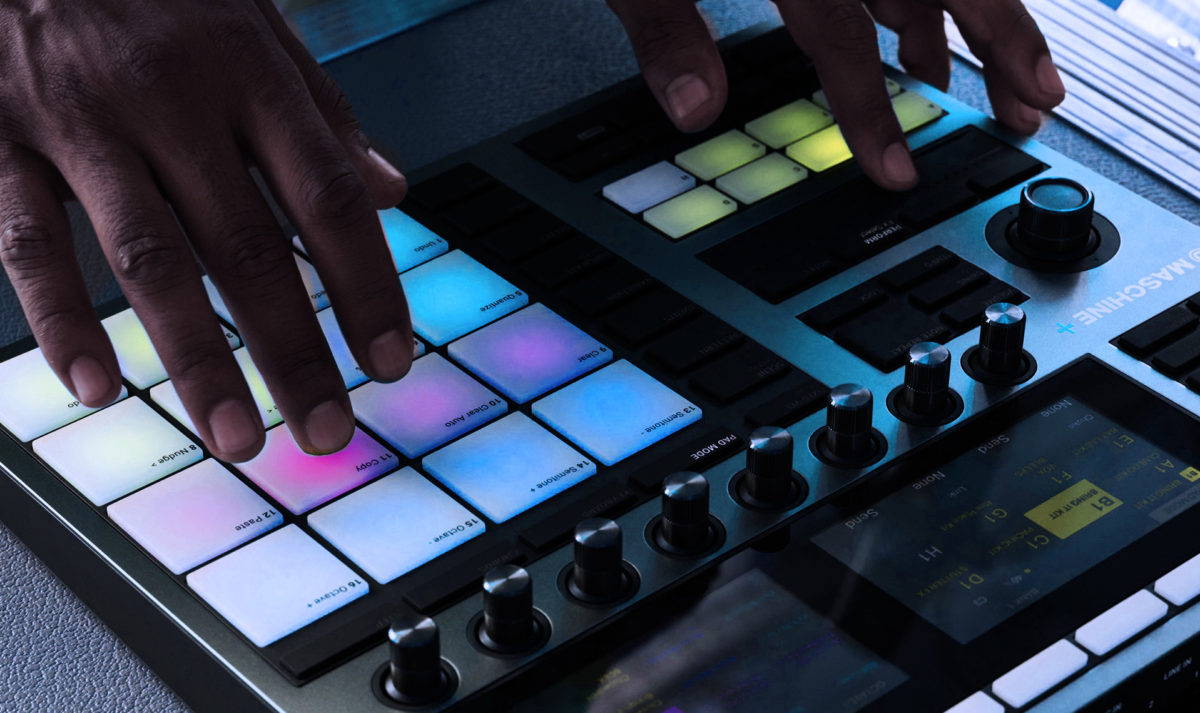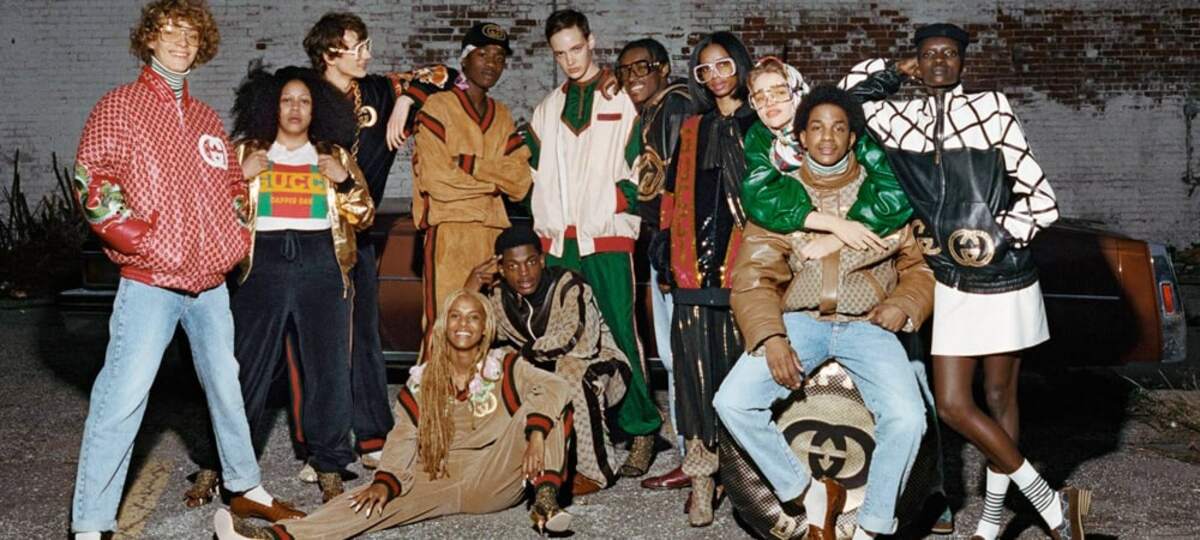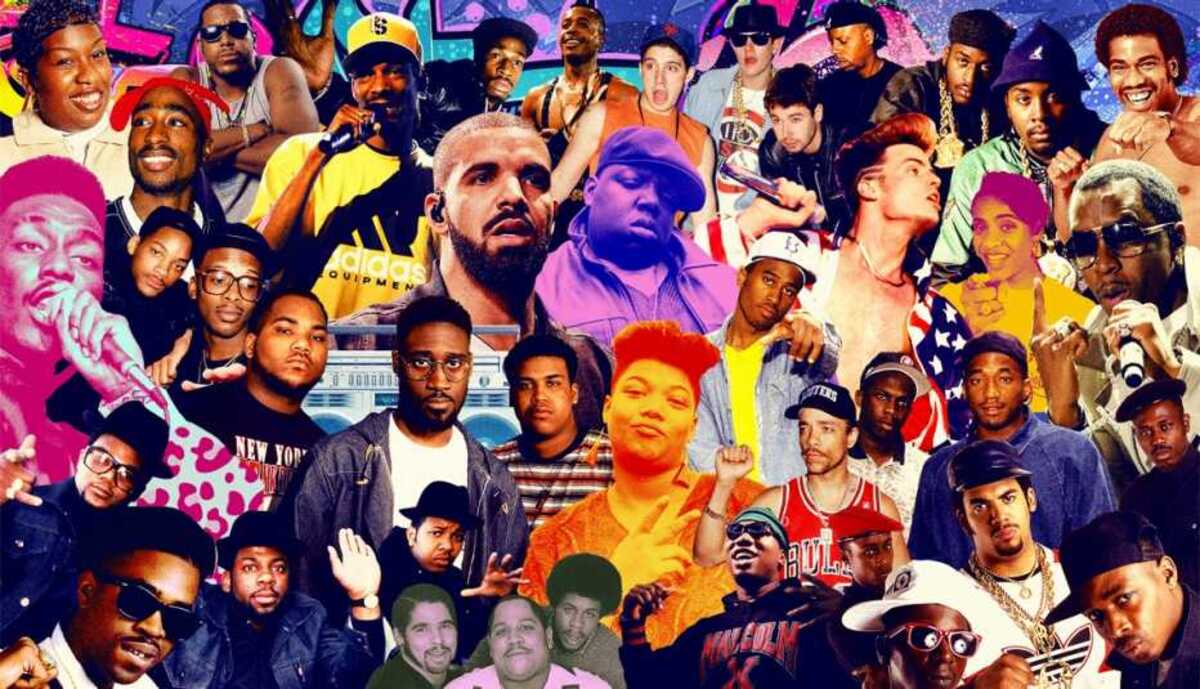

Hip Hop
When And Where Did Hip Hop Originated
Modified: January 22, 2024
Learn about the origins of Hip Hop and discover when and where this influential genre of music and dance first emerged. Uncover the history of Hip Hop and its cultural impact.
(Many of the links in this article redirect to a specific reviewed product. Your purchase of these products through affiliate links helps to generate commission for AudioLover.com, at no extra cost. Learn more)
Table of Contents
- Introduction
- Early Influences on Hip Hop
- The African Roots of Hip Hop
- The Influence of Jamaican Sound Systems
- The Role of Disco in Hip Hop’s Origins
- The Emergence of Hip Hop in the South Bronx
- Famous Hip Hop Pioneers
- Hip Hop’s Evolution and Spread across the United States
- The Impact of Hip Hop on Popular Culture
- The Future of Hip Hop
- Conclusion
Introduction
Hip Hop is more than just a genre of music; it is a cultural movement that has captivated audiences worldwide. The roots of Hip Hop can be traced back to the vibrant streets of the South Bronx in New York City during the 1970s. What started as a form of self-expression for marginalized urban communities has now become a global phenomenon, shaping not only music but also fashion, art, and even political discourse.
At its core, Hip Hop is known for its unique blend of rhythmic poetry, beats, and samples, accompanied by energetic dance moves and a distinctive sense of style. Beyond the music, hip-hop culture encompasses elements such as graffiti art, breakdancing, DJing, and street fashion. It emerged as a voice for the unheard, giving a platform to communities plagued by poverty, crime, and social injustice.
The evolution of Hip Hop can be attributed to a myriad of influences, including African and Jamaican music, disco, and the unique socio-cultural environment of the South Bronx. This article delves into the origins and early influences of Hip Hop, its rise to prominence in the South Bronx, the contributions of famous pioneers, its spread throughout the United States, and its lasting impact on popular culture.
Early Influences on Hip Hop
Before Hip Hop emerged as its own distinct genre, its roots can be traced back to various musical and cultural influences. These early influences laid the foundation for the unique sound and style that Hip Hop would eventually become.
One of the key influences on Hip Hop can be traced back to the African diaspora. The rhythmic drumming, storytelling, and oral traditions of African music played a significant role in shaping the musical and poetic aspects of Hip Hop. The use of call-and-response, syncopated beats, and lyrical storytelling can all be attributed to African musical traditions.
Another influential factor in the birth of Hip Hop was the Jamaican sound system culture. Sound systems were mobile DJ setups that played reggae music at street parties and events. These sound systems served as a major source of entertainment and inspiration for the communities in the South Bronx. The DJs would showcase their skills, blend different records, and engage the crowd with their charismatic performances. This culture of DJing and playing music for a live audience laid the foundation for the DJing aspect of Hip Hop.
Furthermore, the disco movement of the 1970s played a significant role in the development of Hip Hop. Disco music, with its funky beats and pulsating rhythms, greatly influenced the early Hip Hop sound. DJs would isolate and loop instrumental sections of disco tracks, creating extended dance breaks known as “breaks.” These breaks became the foundation for the rhythmic patterns often found in early Hip Hop records.
Thus, it is clear that the origins of Hip Hop were deeply rooted in African music, Jamaican sound system culture, and the disco movement. These diverse influences converged and culminated in the birth of a distinctly urban and rebellious cultural movement that would take the world by storm. Next, we will explore how these influences manifested in the birth of Hip Hop in the South Bronx.
The African Roots of Hip Hop
The African diaspora plays a fundamental role in the origins of Hip Hop. The rhythmic traditions, storytelling techniques, and oral histories of African cultures heavily influenced the foundation of this cultural movement.
One significant influence comes from West African griots, who are the keepers of oral traditions and history. Griots are known for their poetic storytelling abilities and their use of rhythm as a means of communication. These oral traditions were passed down from generation to generation and often addressed themes of struggle, resilience, and cultural identity.
The griot tradition can be seen in the lyrical and poetic nature of Hip Hop. Rappers use their lyrics to tell stories, express personal experiences, and address social and political issues. The strong emphasis on wordplay, metaphors, and clever rhyme schemes can be directly traced back to the African griot tradition.
Furthermore, the rhythmic traditions of West Africa play a pivotal role in Hip Hop’s soundscape. The use of complex polyrhythms, syncopation, call-and-response patterns, and percussive elements can all be traced back to African music. These rhythmic elements are a fundamental aspect of Hip Hop, with beats and grooves driving the music and providing a backdrop for the lyrical delivery.
Moreover, the African concept of communal gathering and celebration is reflected in the social and performative nature of Hip Hop. Just as African communities would come together for festive events, Hip Hop originated as a form of expression in communal spaces like parks, block parties, and club gatherings. These gatherings served as platforms for rappers, DJs, artists, and dancers to showcase their talents, express themselves, and connect with their communities.
In summary, the African roots of Hip Hop are deeply ingrained in its musical and cultural DNA. The storytelling traditions of griots, the rhythmic complexities of African music, and the communal nature of African celebrations are all integral to the birth and development of this groundbreaking cultural movement. Understanding and honoring these African roots is important in appreciating the rich heritage of Hip Hop and its ongoing global impact.
The Influence of Jamaican Sound Systems
One of the key influences on the birth of Hip Hop can be attributed to the vibrant sound system culture that originated in Jamaica. The Jamaican sound system culture played a crucial role in shaping the early days of Hip Hop in the South Bronx.
Sound systems were mobile DJ setups consisting of turntables, amplifiers, and speakers, playing reggae music at street parties, dances, and clubs. These sound systems became more than just a source of music; they represented a way of life and a sense of community for Jamaican immigrants and their descendants in the South Bronx.
The DJs in the Jamaican sound system scene were known for their mastery of selecting and blending records, creating seamless and engaging mixes that energized the crowd. They used their skills to entertain and engage the audience, often engaging in friendly competitions to showcase their prowess.
These sound system events served as inspiration for many early Hip Hop pioneers. They witnessed the power of music and DJing to bring people together, create a sense of belonging, and provide a platform for self-expression. The DJs in the South Bronx took these influences and began to incorporate them into their own parties and gatherings.
Furthermore, the sound system culture introduced the concept of toasting or emceeing, which involves speaking and singing over instrumental tracks. Jamaican DJs would often provide lively commentary and encouragement to the crowd, creating a vibrant and interactive atmosphere. This aspect of toasting would later evolve into the art of rapping in Hip Hop.
Another significant influence of the Jamaican sound system culture is the practice of dub mixing. Dub mixing involves manipulating and remixing tracks in real-time using various effects and techniques, creating unique versions of songs. This experimental approach to music production left a lasting impact on early Hip Hop producers, who would eventually incorporate similar techniques into their own music.
In summary, the Jamaican sound system culture played a vital role in shaping the early foundations of Hip Hop. Their DJing skills, the art of toasting, and the innovative approach to music production influenced the birth of Hip Hop in the South Bronx. The sound systems were not only a source of entertainment but also a source of inspiration and empowerment for marginalized communities, ultimately contributing to the growth and development of Hip Hop as a cultural movement.
The Role of Disco in Hip Hop’s Origins
Disco, a popular music and dance movement of the 1970s, played a significant role in the origins and development of Hip Hop. The infectious beats, vibrant energy, and pulsating rhythms of disco music heavily influenced the emergence of Hip Hop in the South Bronx.
During the disco era, clubs and dance floors were filled with people seeking an escape from the challenges of everyday life. Disco music, with its groovy basslines, soulful vocals, and catchy melodies, provided the perfect soundtrack for carefree nights of dancing and celebration.
One aspect of disco that had a profound impact on Hip Hop was the use of extended dance breaks or “breaks” in songs. DJs in disco clubs would seamlessly transition between songs, emphasizing the instrumental sections where the rhythm and groove were most prominent. These breaks created an electric atmosphere on the dance floor, allowing dancers to showcase their skills and express themselves through movement.
In the South Bronx, DJs began to recognize the potential of these breaks as a foundation for creating a new form of music. Inspired by the disco DJs, they started to isolate, loop, and extend the instrumental breaks of disco records. Using two turntables, they would seamlessly blend these instrumental sections, creating extended drum and rhythm patterns that formed the basis of early Hip Hop beats.
This innovation introduced the concept of “breakbeats” in Hip Hop. Breakbeats are the drum sections of songs, typically derived from funk, soul, and disco tracks, that are looped and used as the rhythmic foundation for rappers and dancers in Hip Hop. Through the manipulation and creative use of these disco breaks, DJs in the South Bronx paved the way for a new genre of music that would come to be known as Hip Hop.
Furthermore, disco DJs and their mixing techniques had a direct influence on the art of DJing in early Hip Hop. Disco DJs seamlessly blended tracks, used effects, and manipulated vinyl records to create smooth transitions and energetic flows. These techniques were adopted by Hip Hop DJs, who incorporated their own style and flavor, such as scratching and cutting, into their performances.
In summary, disco music had a profound influence on the origins of Hip Hop. The use of breaks, the energetic dance culture, and the DJing techniques in disco clubs all played a crucial role in shaping the sound, style, and spirit of Hip Hop. Disco was a pivotal building block that laid the foundation for the unique and groundbreaking cultural movement that would take the world by storm.
The Emergence of Hip Hop in the South Bronx
The South Bronx in New York City during the 1970s was a neighborhood plagued by poverty, crime, and neglect. It was in this challenging environment that Hip Hop emerged as a powerful form of artistic expression and cultural resistance.
The South Bronx became the breeding ground for Hip Hop due to a combination of factors. First and foremost, the lack of resources and opportunities pushed young people to find creative outlets for self-expression. In the absence of well-funded arts programs, music lessons, and other formal avenues, young individuals turned to the streets and their own ingenuity to create something meaningful.
One of the key elements that gave rise to Hip Hop in the South Bronx was the prevalence of block parties. These informal gatherings brought communities together, providing a space for people to socialize, dance, and enjoy music. DJs played a crucial role in these events, spinning records and entertaining the crowd with their skills.
It was during these block parties that DJs began experimenting with different techniques, such as extending breaks in disco records, using multiple turntables for seamless transitions, and incorporating their own unique style of mixing and scratching. These innovations would form the basis of Hip Hop’s musical style and lay the groundwork for the future of the genre.
Another crucial element in the emergence of Hip Hop in the South Bronx was the development of breakdancing and graffiti art. Breakdancing, also known as b-boying or breaking, provided an outlet for self-expression through physical movement. It became a form of competitive and artistic expression, with dancers showcasing their skills in battles and performances.
Graffiti art, on the other hand, allowed individuals to leave their mark on the urban landscape. Walls, subway trains, and public spaces became canvases for artists to express their creativity and make bold statements. Graffiti art became intertwined with the Hip Hop movement, visually representing the culture’s rebellious and vibrant spirit.
The emergence of MCing, or rapping, was another crucial component of Hip Hop’s rise in the South Bronx. MCs would take to the mic during parties or block gatherings, delivering rhythmic poetry and clever wordplay over the beats provided by the DJs. This combination of DJing and MCing became the core of Hip Hop performances and laid the foundation for the future of the genre.
In summary, the South Bronx served as the fertile ground where Hip Hop took root and flourished. The combination of block parties, innovative DJ techniques, breakdancing, graffiti art, and the emergence of MCing created a cultural movement that transcended the challenging circumstances of the neighborhood. The spirit of resilience, creativity, and self-expression that emerged in the South Bronx would go on to shape the future of Hip Hop on a global scale.
Famous Hip Hop Pioneers
Hip Hop wouldn’t be what it is today without the groundbreaking contributions of numerous pioneers who helped shape and define the genre. These artists pushed the boundaries of music, brought new styles and techniques into the spotlight, and paved the way for future generations of Hip Hop artists. Here are just a few of the most influential pioneers in Hip Hop:
- Africa Bambaataa: Known as the “Godfather of Hip Hop,” Africa Bambaataa was instrumental in the early development of the genre. He combined elements of funk, electronic music, and soul to create innovative sounds that laid the foundation for Hip Hop’s musical evolution.
- Grandmaster Flash: A true pioneer of DJing and turntablism, Grandmaster Flash popularized techniques such as backspinning, cutting, and scratching. His innovative DJ skills and performances, along with The Furious Five, helped shape the early sound of Hip Hop.
- Kool Herc: Often referred to as the “father of Hip Hop,” Kool Herc is credited with creating the blueprint for DJing and MCing in Hip Hop. His parties in the Bronx laid the groundwork for the culture, bringing together DJs, MCs, and dancers in an electrifying environment.
- Run-DMC: Run-DMC elevated the status of Hip Hop to mainstream success. With their energetic performances, dynamic lyricism, and heavy rock influence, they became one of the first Hip Hop acts to achieve commercial success and crossover appeal.
- Public Enemy: Known for their politically charged lyrics and powerful social commentary, Public Enemy, led by Chuck D and Flavor Flav, inspired a new generation of socially conscious Hip Hop artists. They used their music as a platform to address systemic racism, inequality, and political issues.
These are just a few examples of the many pioneers who played a significant role in shaping the landscape of Hip Hop. Their innovative sounds, technical expertise, and powerful messages paved the way for the genre’s expansion and influence on popular culture. It is important to recognize and appreciate the contributions of these artists as they continue to inspire and impact the Hip Hop community around the world.
Hip Hop’s Evolution and Spread across the United States
After its emergence in the South Bronx, Hip Hop quickly evolved and spread across the United States, finding its way into different regions and communities. As the genre grew in popularity, artists from different cities and backgrounds added their own unique flavors to the Hip Hop sound, leading to a diverse and vibrant cultural movement.
In the 1980s, Hip Hop started to gain traction in other major cities such as Los Angeles, Chicago, and Atlanta. Each city brought its own distinctive style and sound to the genre, contributing to its evolution and expansion.
On the West Coast, artists like N.W.A and Ice-T pioneered the gangsta rap subgenre, tackling issues of gang violence, police brutality, and social injustice. Their raw and unfiltered lyrics reflected the realities of inner-city life in Los Angeles, giving voice to marginalized communities.
In Chicago, artists like Common and Kanye West brought a more introspective and lyrical approach to Hip Hop. They introduced soulful production and conscious lyrics, exploring themes of identity, social issues, and personal growth.
Meanwhile, Atlanta became known for its trap music, characterized by heavy bass, aggressive beats, and vivid storytelling. Artists like OutKast, T.I., and Gucci Mane played a significant role in popularizing this subgenre, ultimately influencing the sound of contemporary Hip Hop.
As Hip Hop continued to spread across the United States, regional scenes flourished in cities like Houston, Miami, Detroit, and New Orleans, each contributing their own unique styles and perspectives.
Moreover, the internet and digital age further accelerated the spread of Hip Hop, connecting artists and fans from different corners of the country. This allowed for the discovery and collaboration of artists outside of the traditional music industry hubs.
The influence of regional styles, combined with the accessibility of the internet, resulted in a diverse ecosystem of sounds and subgenres within Hip Hop. This includes alternative Hip Hop, conscious Hip Hop, mumble rap, trap, and more, each capturing different themes, musical aesthetics, and cultural expressions.
Today, Hip Hop continues to evolve and transcend boundaries, both geographically and culturally. Artists from around the world draw inspiration from the roots of Hip Hop while infusing their own cultural experiences, languages, and musical traditions into the genre.
In summary, Hip Hop’s evolution and spread across the United States have been characterized by the contributions of artists from various regions, each adding their own unique styles and perspectives to the genre. As the geographic boundaries continue to dissolve in the digital age, the future of Hip Hop remains bright, with a continued global impact on music and culture.
The Impact of Hip Hop on Popular Culture
Hip Hop has had a profound and far-reaching impact on popular culture, permeating various facets of society and leaving an indelible mark. Its influence extends beyond the realm of music, shaping fashion, art, language, and even political discourse.
One of the most notable contributions of Hip Hop to popular culture is its influence on fashion. From the early days of b-boy style with tracksuits and sneakers to the emergence of streetwear brands and high-end collaborations, Hip Hop has shaped trends and pushed boundaries in the fashion industry. Iconic figures like Run-DMC, Notorious B.I.G, and Jay-Z have become style icons, and their fashion choices have had a lasting impact on mainstream culture.
In addition to fashion, Hip Hop has also played a significant role in the art world. Graffiti art, which originated alongside Hip Hop, has gained recognition as a legitimate art form. Artists like Jean-Michel Basquiat and KAWS, who were influenced by the urban aesthetic of Hip Hop, have risen to prominence in the art world, blurring the lines between street art and fine art.
Hip Hop’s impact on language and slang cannot be overstated. Phrases and words popularized by Hip Hop artists have made their way into mainstream vocabulary. From “bling” and “fly” to the ubiquitous “yo” and “dope,” Hip Hop has enriched and expanded the English language, leaving its mark on communication and expression worldwide.
Moreover, Hip Hop has become a powerful vehicle for social and political commentary. Artists like Public Enemy, Kendrick Lamar, and J.Cole have used their platform to shine a light on social issues such as racial inequality, police brutality, and socioeconomic disparities. Hip Hop has provided a voice for the marginalized and served as a catalyst for change, sparking important conversations and inspiring activism.
Furthermore, the international popularity and influence of Hip Hop have broken down cultural barriers. The genre’s global reach has allowed artists from different backgrounds and languages to connect and collaborate, fostering cultural exchange and understanding. Hip Hop has become a universal language, transcending borders and uniting people from diverse backgrounds through its beats, rhymes, and shared experiences.
In summary, Hip Hop’s impact on popular culture is profound and wide-ranging. Its influence can be seen in fashion trends, art movements, language, and social activism. Hip Hop has shattered barriers, challenged norms, and provided a platform for marginalized voices to be heard. As Hip Hop continues to evolve, it will undoubtedly leave an enduring legacy on popular culture for generations to come.
The Future of Hip Hop
The future of Hip Hop is bright and filled with endless possibilities. As the genre continues to evolve and adapt, it will undoubtedly push boundaries, embrace new technologies, and explore uncharted territories. Here are some key aspects that will shape the future of Hip Hop:
Innovation in Sound: Hip Hop has always been at the forefront of musical innovation, and that trend will continue. Artists will experiment with new sounds, blending genres, and incorporating elements of electronic music, live instrumentation, and global influences. The boundaries of what defines a Hip Hop beat will be continuously pushed, resulting in fresh and exciting sounds for fans to enjoy.
Lyricism and Content: While the sound of Hip Hop may evolve, the essence of lyricism and storytelling will remain at its core. Artists will continue to deliver thought-provoking lyrics, addressing social issues, personal experiences, and providing commentary on the world around them. The power of words and the ability to captivate listeners through skillful wordplay and storytelling will always be a defining characteristic of Hip Hop.
Global Expansion: Hip Hop’s global influence will continue to grow, transcending cultural boundaries. Artists from around the world will embrace the genre, infusing their own cultural experiences and languages into the music. This cross-pollination of styles and perspectives will not only bring fresh perspectives but also unite diverse communities and foster cultural exchange.
Influence on Other Genres: Hip Hop’s influence has already permeated various genres, but its impact will continue to be felt in unexpected ways. We can expect to see elements of Hip Hop in pop, rock, electronic music, and beyond, as artists continue to draw inspiration from the genre’s innovative sounds, production techniques, and lyrical approaches.
Technological Advancements: As technology continues to advance, it will undoubtedly shape the future of Hip Hop. Artists will leverage tools such as virtual reality, artificial intelligence, and streaming platforms to engage with their audiences in new and immersive ways. We can also foresee the integration of live performances and virtual experiences, allowing for unique and interactive encounters between artists and fans.
Elevating Social and Political Activism: Just as Hip Hop has always been a platform for social and political commentary, the future will see it continue to address and challenge societal issues. Artists will use their music to advocate for change, promote social justice, and empower marginalized communities. Hip Hop will remain a powerful tool for amplifying unheard voices and sparking conversations that lead to positive social impact.
In summary, the future of Hip Hop is marked by innovation, global connectivity, and a commitment to social change. As the genre continues to evolve, it will incorporate new sounds, technologies, and perspectives while staying true to its roots of lyrical mastery, authenticity, and cultural expression. The future of Hip Hop awaits, promising an exciting and dynamic journey for both artists and listeners alike.
Conclusion
Hip Hop, born from the streets of the South Bronx in the 1970s, has transcended its humble beginnings to become a global cultural movement. Its origins can be traced back to African musical traditions, Jamaican sound system culture, the influence of disco, and the socio-cultural landscape of the South Bronx. Through the contributions of countless pioneers, Hip Hop has evolved and spread across the United States, shaping regional scenes and inspiring artists from various backgrounds.
The impact of Hip Hop extends far beyond music, permeating popular culture in significant ways. It has influenced fashion, art, language, and even political activism. Hip Hop has given a voice to the unheard, providing a platform for marginalized communities and sparking crucial conversations on social issues.
As we look to the future, Hip Hop shows no signs of slowing down. It will continue to innovate in sound, embracing new genres and technologies, while maintaining its commitment to lyricism and storytelling. The genre’s global influence will expand, fostering cultural exchange and unity among diverse communities worldwide.
Hip Hop’s journey is one of resilience, creativity, and empowerment. It has shattered barriers, challenged norms, and provided a voice for those who have been silenced. As Hip Hop continues to evolve, it will undoubtedly leave an indelible mark on popular culture and continue to inspire generations to come. The future of Hip Hop remains bright, promising endless possibilities and a continued impact on the world.



